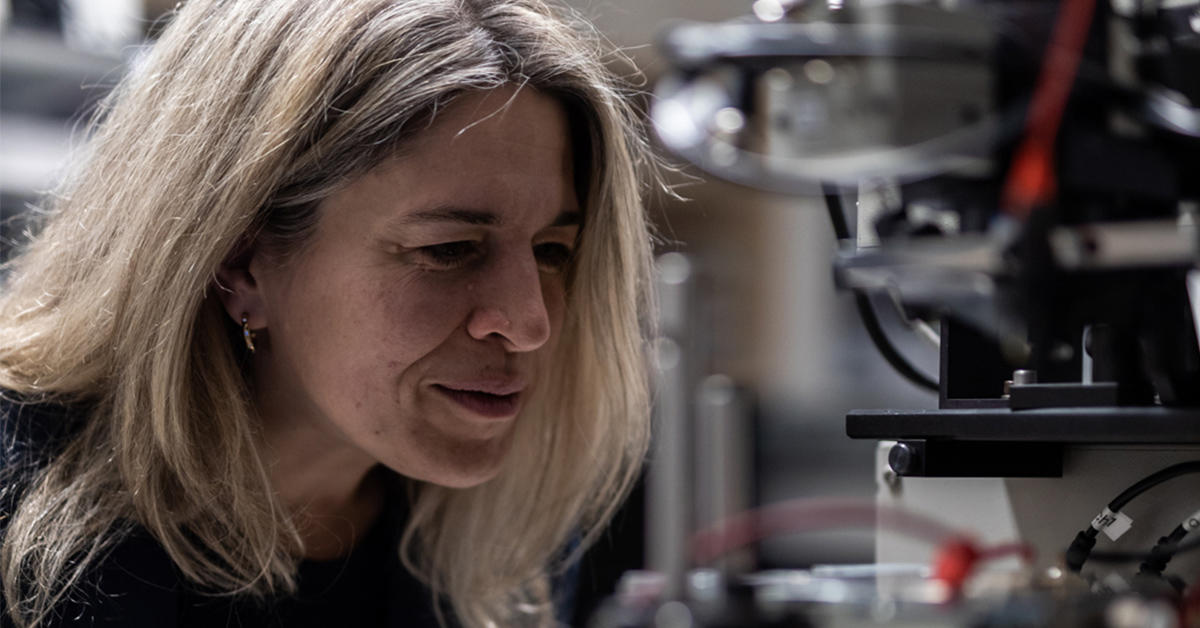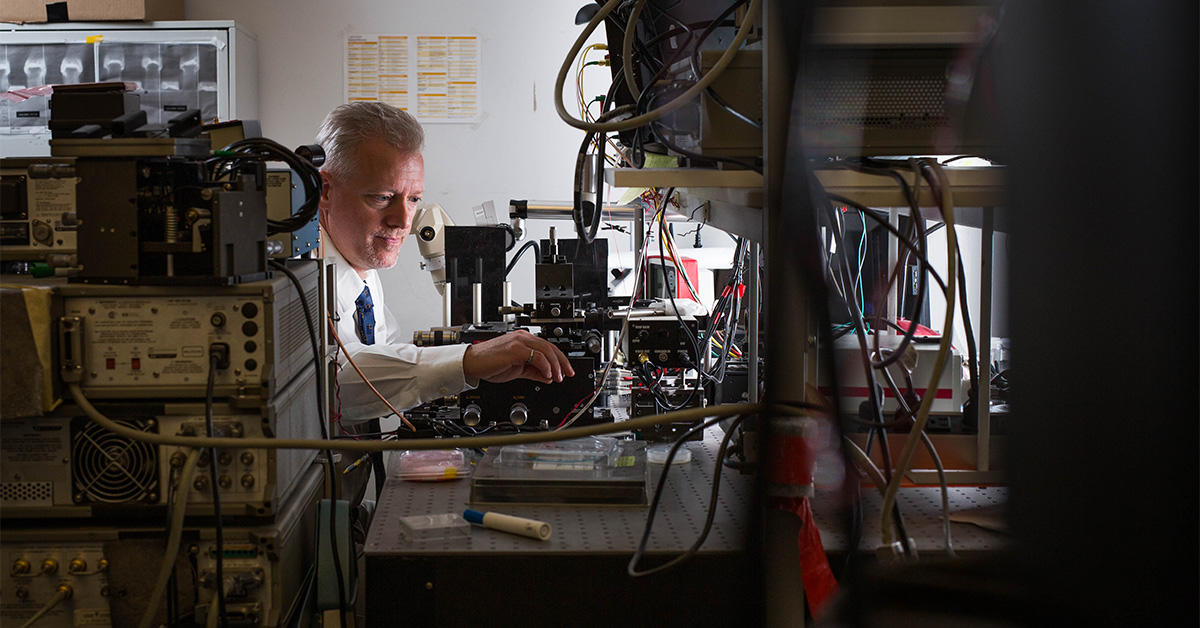
Advances in photonics, the science and technology of light, will be critical in developing the next generation of game-changing tech — sensors for environmental monitoring and point-of-care diagnostics, LiDAR for autonomous driving, advanced devices for green energy and high-performance networks, along with many other applications.
A new research program led by Pierre Berini and Karin Hinzer from the Faculty of Engineering seeks to increase the miniaturization and integration of advanced photonic materials and improve fabrication processes in various industries, including telecommunications, health care, manufacturing, and energy.
This is one of five uOttawa projects that will share $23 million from the Canada Foundation for Innovation’s 2020 Innovation Fund.
In this Q&A, Berini and Hinzer share their passion for photonics and explain how their project will impact our lives.
This is a field that touches many of our lives, and the average person knows so little about it. How would you describe photonics and your contribution to the field if you were trying to explain it at a dinner party?
[KH]: Photonics is the creation and management of light. For the past 25 years, I’ve worked on developing devices, including solar panels and lasers, that convert light to electricity and electricity to light, with the least amount of energy loss possible. I often use nanotechnology in my work to achieve this. Basically, we create devices and applications that everybody relies on in modern life.
[PB]: I specialize in nanophotonics, which is the science and technology of light on a nanoscale. For most of my career, I have worked on the miniaturization of structures and the integration of materials to develop advanced nanoscale photonic devices, such as biosensors that rapidly detect disease at the point of care, next-generation optical fibre networks, and structured surfaces that can control spectral reflection, ideal for producing devices that need to steer optical beams.
With this new funding, you’re attempting to get smaller. How small do you think you can go, and why is smaller better?
Smaller components require less power and leave a much smaller carbon footprint. We can improve the efficiency and sustainability of our everyday devices, and of the devices within our devices, by integrating nanophotonic technologies into them.
With our new CFI-funded toolset, we will be able to define features as small as 10 nm in size, which is 1/10,000 of the thickness of a hair. We will also be able to make use of advanced semiconductor materials in ultrathin multi-layered stacks, allowing us to improve the functionality of telecommunication systems, for example.
Very small features also allow us to harness the power of quantum mechanics, a branch of physics that has enabled the creation of lasers, electronic transistors, and portable computers.
What kind of impact could this research have? How will it change people’s lives?
Photonic components are everywhere — they are used in applications essential to productivity and quality of life, such as telecommunications, cybersecurity, medical diagnostics and devices, autonomous transportation, energy, and environmental testing.
The research enabled by this equipment will have many applications. Its focus on miniaturization addresses issues such as:
- information availability through satellite, optical fibre, and wireless telecommunication
- improved and accessible health care via rapid testing, diagnostics, treatment, and implants
- safer and more efficient transportation thanks to autonomous vehicles enabled by vision systems and LiDAR
- secure communications and cybersecurity that use quantum devices and quantum computers
- climate change by reducing the carbon footprint of devices and implementing net-zero energy technologies
Our research is also looking to improve the processes involved in manufacturing advanced photonic materials. New materials and fabrication techniques allow us to create and manipulate light in new ways. Bringing such advanced functions to market critically depends on the “mass manufacturability” of components in order to keep costs down. Fabrication processes underpin manufacturing, so new materials and methods are required to keep costs low and provide widespread societal access to technology.
Is there a particular application or sector you are most excited to see make use of your miniaturization and integration research?
[KH]: I’m excited to be able to work on the next generations of zero-emission technologies that use photovoltaics, the conversion of light into electricity using semiconducting materials, to generate electricity and green hydrogen.
[PB]: I’m excited by the prospect of integrating semiconductor materials into nanoscale structures, which could lead to technologies such as nano-lasers and nano-modulators being used in next-generation telecommunications and tiny implantable biosensors.
Other Ottawa-based members of our team include Dr. Anis, who is leading an exciting program in biophotonics; Dr. Dolgaleva, who is at the forefront of nonlinear terahertz optics; Dr. Robert Boyd, CERC laureate in Quantum Nonlinear Optics and world leader in nonlinear optics; Dr. Paul Corkum, founder of attosecond science and leader of one of the world’s most famous groups in ultrafast lasers; Dr. Pavel Cheben, world leader in Si photonics and subwavelength nanophotonics; and Dr. Tony SpringThorpe, world leader in III-V epitaxy who designed and built one of Canada’s first epitaxial growth systems.
